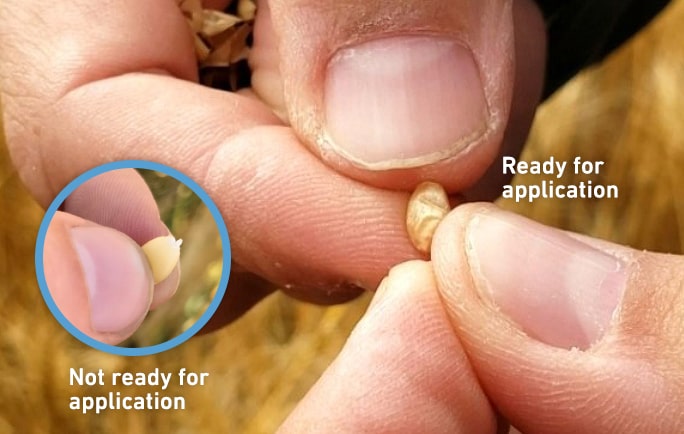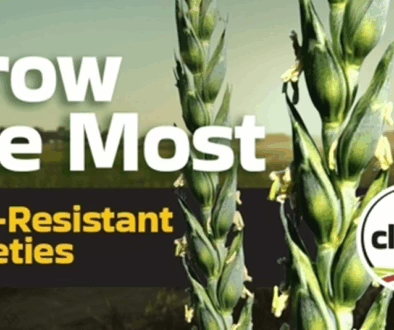Feed Barley: Pre-Harvest Glyphosate Staging for Weed Control
Pre-harvest glyphosate is for weed control and not for use as a desiccant or for managing late maturing areas or tillers.
The recommended harvest window for feed barley is 7–14 days after pre-harvest glyphosate application to allow time for the weeds to translocate the glyphosate into the tissues to prevent regrowth.
Do not apply pre-harvest glyphosate to your cereal crops when the grain moisture is above 30%. This could leave unacceptable residue levels and impact the marketability of your grain. Use the thumbnail test to determine whether your grain is at the appropriate stage of maturity.

At less than 30% grain moisture, the kernel is firm and reasonable pressure from your thumbnail leaves a dent in it (i.e. hard dough stage pictured above in a wheat kernel). Use this staging guide from KeepItClean.ca to determine when grain moisture is less than 30% in cereal crops. Learn More
Key considerations for applying glyphosate to feed barley:
- Where allowed, glyphosate is registered for pre-harvest weed control. Glyphosate should not be used as a desiccant.
- Pre-harvest glyphosate should only be applied for weed control once grain moisture is less than 30% in the least mature part of the field.
- Be mindful of any regrowth and late tillering, especially with seed production, as this can impact the grain moisture assessment.
- To avoid unacceptable product residues, always follow the crop protection product’s label for application rate, timing and pre-harvest interval (PHI).
- Never harvest earlier than recommended — this can increase the risk of unacceptable glyphosate residues in harvested grain.
- When using glyphosate for pre-harvest weed control in a tank mix with other products, such as Saflufenacil (Heat), the products must still be applied when grain moisture content is less than 30% in the least mature part of the field and must also follow the PHI of the most restrictive product label.
- Review the Product Advisory on KeepItClean.ca to be aware of market risks that can arise from using certain crop protection products on cereals before proceeding with crop management plans.
Following these tips and responsibly applying crop protection products will reduce market risks and help keep these valuable tools available for growers.




